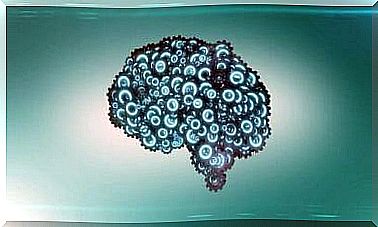Persuasion Techniques By Cialdini

Persuasion is the social influence on the system of beliefs, attitudes, intentions, motivations and behaviors. It is a form of manipulation that harnesses the power of commitment and is aimed at changing thoughts and behaviors. Persuasion techniques use words to influence and bring about change in others.
Among the various studies on persuasion, the work of Robert B. Cialdini, an American psychologist who has brought together the different techniques of persuasion into six fundamental principles, emerges. For this purpose, Cialdini worked as a salesman in a used car shop, in charitable organizations, in marketing agencies and the like.
Cialdini’s goal was to use and apply the knowledge acquired in the field of psychology in his work and verify its effectiveness through covert experiments.
ecniche Here are the six principles on which, according to the American psychologist, the techniques of persuasion are based.
Persuasion techniques
Commitment and consistency

The principle of coherence acts on the desire to be and to appear a person with a coherent attitude and behavior. According to this principle, we are more willing to make a commitment if it corresponds to positions we have previously taken.
Within this principle some of the best known techniques are “the foot in the door” and “the low blow”.
The foot-in-the-door technique consists in asking the person from whom we want to get something a first small commitment, not too onerous to lead him to refuse and always in relation to our goal. When he accepts the first commitment, he moves on to the next larger one, which is usually the real goal. If the individual refuses the second request, he will feel a form of inconsistency within himself.
The low blow technique gets its name because once an agreement is reached on a series of conditions, the bases are withdrawn and replaced with worse conditions. Since the customer has already accepted the previous ones, he will tend to accept the following ones as well. This is one of the most effective persuasion techniques.
Reciprocity
Generally the human being feels the need to return the favor received. Reciprocity refers to the need, in interpersonal relationships, to restore balance. That is to say, when we receive something, we feel the need to reciprocate. If, for example, we want to obtain information from someone, it will be easier if we first made a confidence, a small confession. That way, he will feel obligated to tell us something in return.
People tend to treat others the same way they are treated; this inertia gives rise to one of the most powerful persuasion techniques. Applying the principle is simple: it occurs, for example, when we receive an unexpected compliment or an exclusive discount. The influence of this psychological mechanism is all the stronger the more the gift is perceived as personal and targeted. The principle is, in a nutshell, to give something to induce the need to give back with something else.
Social approval or consent
Human beings, in general, tend to believe that the behavior adopted by the greatest number of people is valid. “If everyone does it, there will be a good reason, I won’t be the only one not to do it.” Everyone likes to feel accepted by the group and we think that acting like others reduces the risk of making mistakes.
This is the psychological mechanism by which we tend to adapt to the opinion of the majority: we are better prepared to accept or reject something if someone has already done it before us. Its application is frequent: if we see that a product has obtained very positive reviews, it is possible that we will buy it. Likewise, if a brand has a lot of followers on social networks, we are more likely to follow it too.

Authority
According to the principle of authority, we tend to be influenced when we interact with an authoritative figure. It is not about coercion or the exercise of power, but the aura of credibility and prestige that surrounds this person. We tend to think that those in leadership positions have more knowledge, experience, or rights to think than we do.
Two elements come into play in the principle of authority, hierarchy and symbols. Hierarchy is based on the belief that people who have reached higher levels of the hierarchy have more experience and knowledge than others. The symbols, on the other hand, give credibility: the police uniform, the banker’s signed suit, the doctor’s smock, the titles of an academic. The classic example is a celebrity sponsoring a product or defending an idea, even when it has nothing to do with their business.
Sympathy
By establishing a bond of sympathy or similarity with others, it is easier to persuade. The principle of sympathy, sometimes also understood as liking, taste or attraction, indicates an obvious tendency: we are more willing to let ourselves be influenced by the people we like and less by those who provoke a sense of rejection in us.
Beauty, similarity, familiarity, compliments and flattery are some of the factors used to arouse sympathy and seduce us. The use of models and famous people in advertising is based precisely on this principle: sympathy and familiarity. Even in politics it is customary to reinforce the idea that candidates are ordinary people, worried about the same problems that afflict us.

Shortage
Finally, we tend to think that there are resources available to everyone; but if they are scarce, we attribute them greater value. Scarcity can mean limited availability over time or less accessibility. In short, the perception of scarcity creates demand.
This principle is applied in time-limited special offers, such as sales, or in the creation of limited editions. The harder it is for us to achieve something, the more value we place on it. It is the same result that the prohibition arouses in us. If an object is prohibited, the likely effect is an immediate increase in interest, as is the case, for example, with drugs.
The persuasion techniques we have seen are used extensively by advertising and commercial agents to trick us into buying or changing our behavior. Now that you know them and know how to identify them, you can control their influence.









